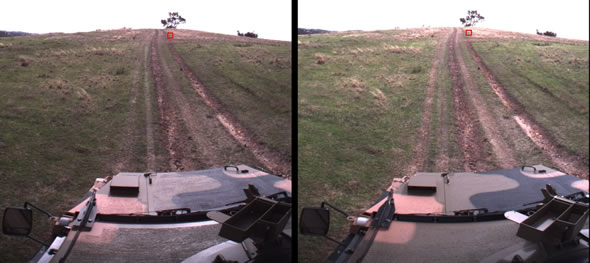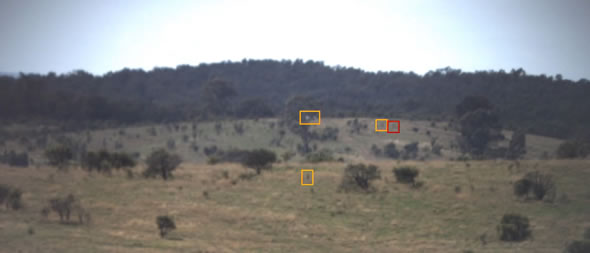

Image intelligence (IMINT) is providing a growing part of the intelligence resources available for military forces. With the introduction of network enabled command and control systems, real-time IMINT is providing the foundation for the engagement of time-sensitive targets, in their ability to rapidly detect, identify and locate targets of opportunity, often obtained by air or ground based, persistent surveillance and observations. Such targets are most difficult to spot in asymmetrical warfare scenarios, as terror and guerrilla operatives activities often generate extremely low ‘signatures’, compared to high intensive military targets.
Therefore, such observations must rely on advanced signal processing capabilities, such as hyper-spectral signature analysis, change detection and efficient means to detect suspicious or specific movements in a target-rich environment. Until recently, such capabilities have relied mainly on radar-based movement detection, while video motion detection employed mainly on airborne or stationary applications.
The Australian company Sentient announced the successful demonstration of a software solution that automatically indicates movement and changes in electro-optical (EO) full motion video (FMV) imagery captured by ground vehicles. The system called Desert Owl was developed as part of the Australian Defense’s Capability and Technology Demonstrator Program (CTD). Desert Owl addresses two of the Defense capability requirements: moving target indication (MTI) and ground change detection (GCD). The test demonstrated the integration of such software in land combat vehicles. Desert Owl, currently at Technology Readiness Level six, could be applied to any Australian Defense Forces land vehicle.
“Desert Owl adds unique capabilities to ADF vehicles,” said Dr Paul Boxer, Managing Director at Sentient Vision Systems. “This technology makes it much easier to detect and track moving objects and changes on the ground, thus delivering improved situational awareness to the vehicle commander.”

Owl is a software suite including an MTI component and Change Detection app. The MTI processes the live video feed from a panoramic scanning camera mounted on the ground vehicle. Desert Owl monitors the area of observation obtained by the video in real-time, automatically indicating moving objects in the camera’s field of view. The system demonstrated how slow and stationary objects, almost impossible for a human to notice, could be detected at ranges of over 4 km. At the demonstration, held at the Puckapunyal Army training facility in Victoria (Australia), Vinod Puri, Chief Technology Officer, DSTO Land Operations Division, stated that Desert Owl was able to provide precise detections, down to a few pixels in size, cuing operators to small or slow moving targets.

By simply comparing live imagery with previously recorded imagery Desert Owl’s GCD technology can also identify visual changes. Dr Boxer explained that the GCD software can process live video in a vehicle moving at up to 60 km/h. It analyses the roadway and landscape ahead of the vehicle, detecting objects that have been added, moved or removed since the last transit, whilst effectively handling environmental and lighting changes.
“The software’s ability to remember everything in detail allows it to indicate changes that are impossible for a human operator to locate, such as disturbances to the ground surface,” said Dr Boxer. “Finding those ground changes and detecting potential threats is key to situation awareness in today’s ground operations,” he added. “The ability of Desert Owl to detect that a pile of rocks or a bush has moved since yesterday has a very high potential to benefit counter – improvised explosive devices (C-IED) operations.”
Sentient has been working with the Defense Science and Technology Organization (DSTO) for a number of years. Under a previous CTD Program Sentient developed its industry-leading automated target detection software for manned and unmanned aircraft – Kestrel Land MTI which is now available from the American UAV company AeroVironment for the Raven, Puma and Wasp III mini UAVs.
















